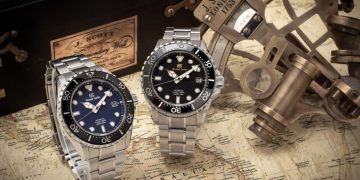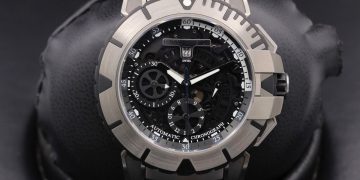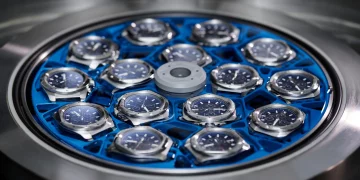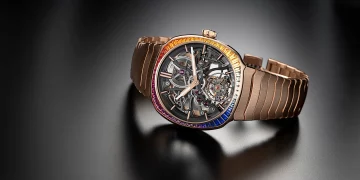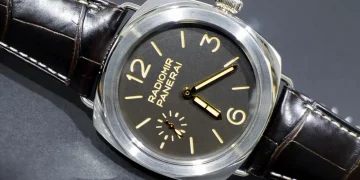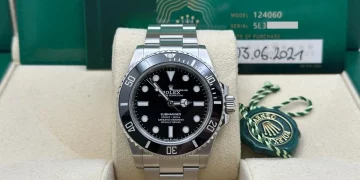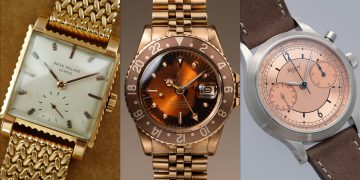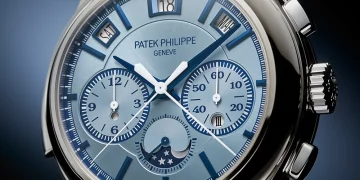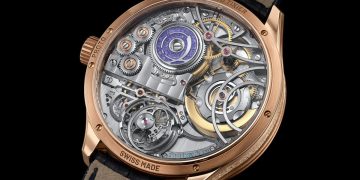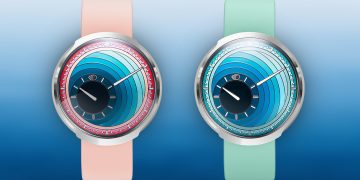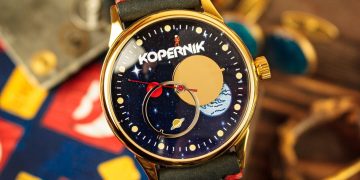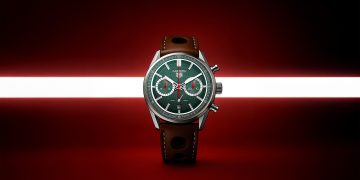The world of horology, or the study and art of timekeeping, has undergone significant changes over the centuries. From early pocket watches to modern smartwatches, the evolution of watch culture has been shaped by technological advancements, societal shifts, and cultural influences. Today, the way consumers perceive watches and make purchasing decisions is deeply intertwined with both the history of timekeeping and the values that modern society places on watches. The watch industry, once dominated by mechanical timepieces as a symbol of prestige and craftsmanship, now includes a broader range of options, from luxury watches to digital smartwatches, appealing to diverse tastes and needs.
This article examines how the evolution of watch culture has influenced modern consumers’ purchasing decisions, focusing on the shift from mechanical to smartwatches, the growing importance of fashion and brand identity, and the role of technology in shaping consumer preferences.
1. The Historical Significance of Watches and Their Role as Status Symbols
Watches, especially mechanical timepieces, have long been associated with status and luxury. In the early days of horology, owning a finely crafted watch was not just about telling time; it was about demonstrating wealth, taste, and sophistication. Luxury watches from prestigious brands like Rolex, Patek Philippe, and Audemars Piguet were often seen as symbols of success and social standing. The craftsmanship, the quality of materials, and the intricate movements were considered marks of distinction, and purchasing a high-end watch was often a significant milestone in a person’s life.
For many decades, watches were worn not just as functional accessories, but as personal statements. The connection between quality and exclusivity played a huge role in driving purchasing decisions. Owning a luxury watch was a way for individuals to distinguish themselves and showcase their taste, akin to owning a rare piece of art or a luxury car.
a. The Rise of the Swiss Watch Industry
The Swiss watch industry, particularly from the 19th to the mid-20th century, dominated the luxury watch market. Renowned for their precise mechanical movements, Swiss watches became the epitome of craftsmanship. Brands like Rolex, Omega, and Longines grew to be synonymous with excellence, creating an elite culture around timepieces. A Swiss watch was seen not just as a functional object, but a lifetime investment, with many models appreciating in value over time.
2. The Shift Toward Fashion and Digital Watches
However, in recent decades, there has been a shift in consumer attitudes toward watches, largely influenced by technological advancements and changes in fashion. The evolution of watch culture is no longer solely focused on mechanical complexity and craftsmanship but also incorporates elements of design, functionality, and technology.
a. The Advent of Quartz and the “Quartz Crisis”
In the 1970s, the introduction of quartz technology revolutionized the watch industry. The rise of quartz watches, which were more affordable, accurate, and easier to produce than mechanical watches, led to the so-called Quartz Crisis. During this period, many traditional Swiss watchmakers faced significant challenges, as consumers were drawn to the practicality and affordability of quartz movements.
This shift not only democratized the world of watches but also marked a new era where fashion and convenience began to outweigh traditional craftsmanship in some consumer segments. Brands like Seiko and Casio capitalized on this trend, offering stylish, functional, and budget-friendly watches that appealed to a broader audience.
b. The Popularity of Digital Watches and Smartwatches
As the world moved into the 21st century, digital watches became increasingly popular, with brands like Apple, Samsung, and Garmin pioneering the smartwatch market. Unlike traditional mechanical or quartz watches, these watches integrate digital technology with various features like fitness tracking, GPS navigation, heart rate monitoring, and even mobile notifications. The smartwatch represents the fusion of fashion and functionality, offering something that was previously unattainable: the ability to keep time while also connecting to the digital world.
For modern consumers, the decision to purchase a watch often goes beyond simple aesthetics and craftsmanship. Now, technology, utility, and multifunctionality play a significant role in purchasing decisions. Smartwatches have become an essential tool for those who value efficiency, connectivity, and versatility, and for many, these watches are now more than just timepieces; they are an extension of their digital lives.
3. Cultural Shifts and the Modern Consumer’s Approach to Watches
In today’s world, purchasing decisions regarding watches are deeply influenced by the cultural shifts that have redefined the watch industry. As more consumers prioritize style, sustainability, and convenience, the luxury watch market is evolving to meet the demands of the modern buyer.
a. Fashion-Driven Purchases
Watches have increasingly become fashion accessories, worn to complement an individual’s style rather than simply serve as functional tools for timekeeping. This shift is evident in the growing prominence of fashion brands and collaborations with designers that offer stylish timepieces at more accessible price points. Brands like Michael Kors, Fossil, and Daniel Wellington have become popular in recent years, offering watches that are more affordable and fashion-forward, appealing to a younger demographic that values design and trendiness over traditional craftsmanship.
For these consumers, the watch serves as an expression of identity. Watches are no longer just about telling the time or showcasing wealth; they are about reflecting personal style and aligning with cultural trends. The modern consumer may choose a watch based on how well it complements their overall aesthetic, making design and brand alignment more important than the mechanical details of the movement.
b. Sustainability and Ethical Considerations
Another key factor influencing modern consumers’ decisions is the increasing emphasis on sustainability and ethical production. As the global focus on environmental issues grows, many consumers are now prioritizing brands that commit to responsible sourcing, eco-friendly materials, and ethical labor practices. This trend has significantly impacted watch brands, with some opting for recycled materials, sustainable production methods, and carbon-neutral initiatives to appeal to environmentally conscious buyers.
For instance, some watchmakers have started using recycled metals, biodegradable materials, and have embraced initiatives that reduce waste and carbon emissions. Brands like Omega and IWC have made significant strides in promoting sustainable practices, which resonate with a growing segment of the market that is increasingly aware of the impact of their purchases on the planet.
c. The Role of Heritage and Brand Identity
While many consumers are drawn to fashion-forward or tech-driven watches, others still find value in the heritage and history of traditional watchmakers. The storytelling aspect of a watch—its legacy, craftsmanship, and the cultural significance of its brand—remains a powerful driver for many buyers. For instance, brands like Patek Philippe and Jaeger-LeCoultre continue to thrive by emphasizing their long histories and commitment to preserving traditional watchmaking techniques.
These heritage brands represent more than just timepieces; they embody a cultural legacy that appeals to those who value authenticity, exclusivity, and the emotional connection associated with owning a timeless piece of horological history. For these consumers, purchasing a luxury watch is not only a transaction but also an investment in a piece of cultural heritage.

4. How the Evolution of Watch Culture Shapes Modern Purchasing Decisions
The evolution of watch culture reflects broader societal shifts, such as the increasing importance of technological integration, individual style, and sustainability. For modern consumers, a purchase decision is influenced by various factors, including:
- Functionality: With the rise of smartwatches, modern buyers are increasingly looking for watches that offer more than just the ability to tell time. Features such as health monitoring, connectivity, and multi-functionality have become essential for many consumers, especially those interested in integrating their timepieces into their digital lives.
- Style and Aesthetics: Watches today are as much about personal style as they are about functionality. The modern consumer is more likely to choose a watch that complements their wardrobe and expresses their individual taste, leading to a growing demand for fashion-forward designs and watches that can be customized.
- Brand Values: Consumers are increasingly aligned with brands that share their values, whether it be sustainability, ethical production, or heritage. For some buyers, the story behind the watch—its craftsmanship, history, and the values the brand represents—is just as important as the watch itself.
- Price Point: While luxury watches continue to appeal to high-net-worth individuals, the democratization of watch culture through affordable fashion brands and smartwatches has made watches accessible to a broader audience. Price remains a significant factor for many consumers, with options available for every budget, from entry-level models to high-end masterpieces.
5. Conclusion
The evolution of watch culture has significantly impacted modern consumers’ purchasing decisions. As technology, fashion, and cultural values continue to evolve, so too does the way people approach watchmaking. Today’s consumers seek a combination of style, functionality, and values when selecting their timepieces, leading to a broader, more diverse market than ever before. Watches are no longer merely about timekeeping; they are about identity, innovation, and heritage. The future of the watch industry will likely involve an ongoing fusion of traditional craftsmanship and modern innovation, reflecting the changing tastes and priorities of today’s global consumer.


